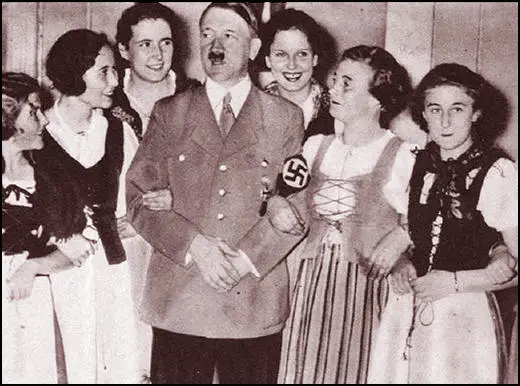During the years leading up to and during World War II, Adolf Hitler and his Nazi regime espoused a twisted vision of Aryan superiority, promoting the idea that the German people were the purest and strongest race on earth. Women, in particular, were encouraged to dedicate their bodies to the cause, serving as vessels for producing future generations of supposedly superior Germans.
These women were known as Lebensborn, a German word that roughly translates to “fountain of life.” The program was founded in 1935 by Heinrich Himmler, the notorious leader of the SS, a paramilitary organization that played a central role in carrying out the Holocaust.
The Lebensborn program was part of a broader effort by the Nazi regime to increase the birthrate of “pure” Germans. It sought to create a network of maternity homes, where women who were deemed racially pure could give birth to children who would be raised as part of the Nazi state. The children were often adopted by SS families, and their biological parents were encouraged to have more children.

To be eligible for the Lebensborn program, women had to meet strict racial criteria. They had to have blonde hair, blue eyes, and a good family background, as well as being physically healthy and mentally sound. Those who passed the initial screening were sent to one of the Lebensborn homes, where they were provided with medical care and given access to the best food and accommodations available.
While some women volunteered for the program out of a sense of duty to the Nazi cause, others were coerced or forced into participating. In some cases, women who were married to men who were not deemed racially pure were pressured to have affairs with SS officers in order to produce children who could be raised as part of the Nazi state.
The children born to Lebensborn mothers faced a range of challenges as they grew up. Many were stigmatized and ostracized by society, and some struggled with the knowledge that their biological parents had dedicated themselves to a cause as heinous as the Nazi regime. Some were able to find a sense of identity and belonging within the SS families who adopted them, while others felt a deep sense of loss and displacement.
The Lebensborn program was eventually shut down at the end of World War II, as Germany faced the consequences of its genocidal actions. However, the legacy of the program continues to haunt the descendants of those who were involved. Many have grappled with the knowledge that their ancestors were complicit in one of the darkest chapters of human history, while others have struggled to come to terms with the trauma and loss that their families endured.
The women who dedicated their bodies to Hitler and the Lebensborn program were caught up in a twisted ideology that sought to elevate one race above all others. Their stories serve as a stark reminder of the dangers of extremism and the consequences of blindly following a dangerous ideology. As we continue to grapple with the legacy of the Holocaust and the atrocities committed in the name of racial purity, it is important to remember the individual stories of those who were caught up in this dark chapter of history.




